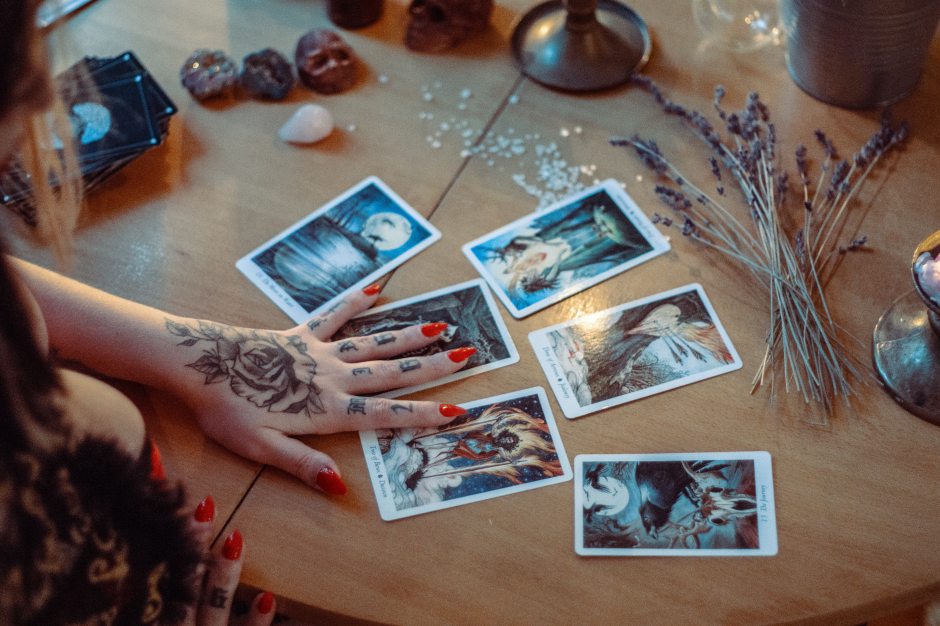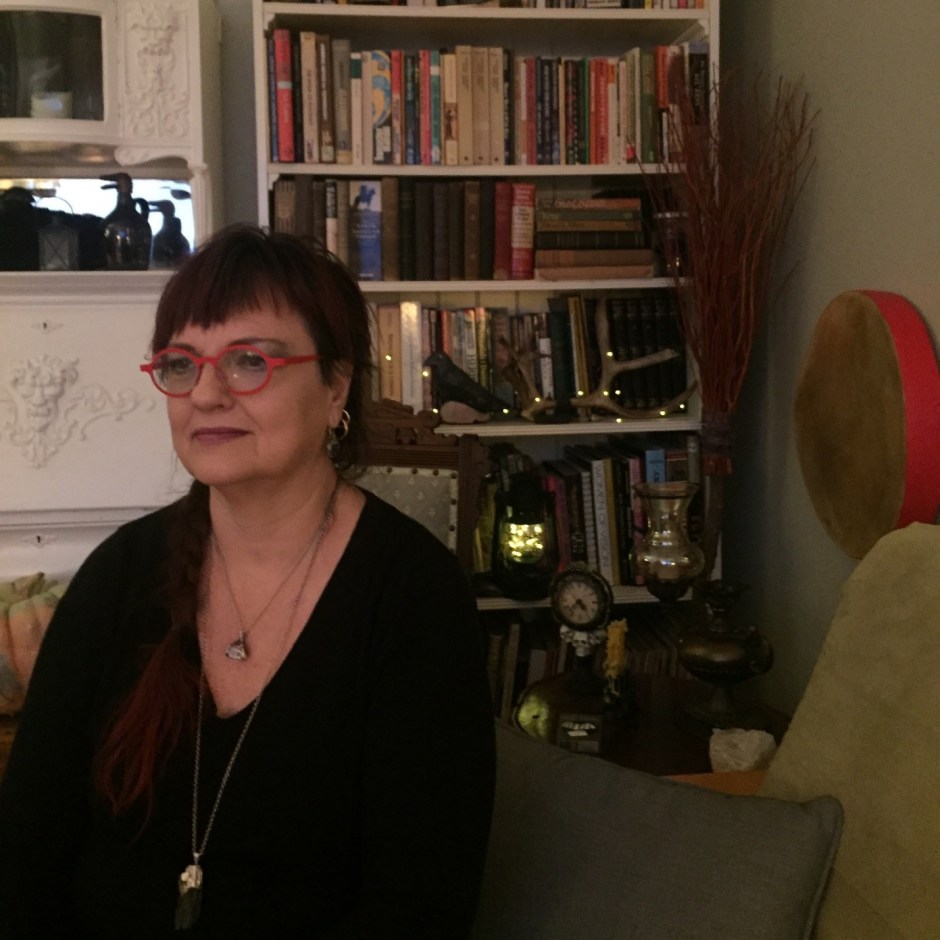AI has become a player in the art world. Although many find this disturbing, they need to accept that it’s here to stay.
By Francisco Figueroa | Featured image via Shutterstock
On October 25, 2018, Christie’s Auction House offered for sale an ink painting titled Edmond de Belamy, created by a French arts group named Obvious. It measured 70cm in length and width, depicting a somewhat blurry image of a man wearing an 18th century black suit and coat, a white collar emphasizing his rounded face. The painting was set in a gilded wooden frame.
If passersby took a closer look, they would notice some peculiarities. The painting resembled a grid of mechanical-looking dots, like a smattering of dark rain. The man’s face blurred with every step, as if the image was cut out of a dream. Further inspection revealed the painting had no eyes, with only two dark holes in place of them that beared no trace of life or expression.
The man in the painting never existed. Obvious created Edmond de Belamy by sorting through countless paintings of 18th century men online and combining them into one image. They used the help of a Generative Adversarial Network, or GAN, to generate a single image from their findings. Estimated to be sold for between $7,000 and $10,000, the painting bought in $432,500, making history as the first work of art produced by AI to be sold at an auction.
The three-man team of Obvious, comprised of Hugo Caselles-Dupré, Pierre Fautrel, and Gauthier Vernier, had no background in art. In the aftermath of the sale, they faced controversy and criticisms for their methods.
“I think [artificial intelligence] has its place in the art world because it tries to replicate what any artist would do, like trying to create from what he knows,” Vernier said in response, during an interview with CNN. “It forces you to try to understand your own creativity and how you would be able to replicate it.”
Is AI a Genre?
On August 26, 2022, in the submission guidelines of the annual 150-year-old state fair in Pueblo, Colorado, digital arts were defined as an artistic practice that uses digital technology as part of the creative or presentation process. For some time after an AI-generated piece titled Théâtre D’Opéra Spatial was submitted to the state fair’s digital arts competition, the competition judges, Cal Duran and Dagney McKinley, were unaware that AI had been used, but told the local newspaper, The Pueblo Chieftain, it would not have changed their decision on August 28 to award the submission first place.
“I think the piece really did that,” Duran said, in regard to the story it told and the feelings it invoked in him. “Even as this controversy is coming out, it’s still invoking that, it’s still causing an uproar. That in itself is kind of remarkable.”
The composer of Théâtre D’Opéra Spatial, Jason Allen, is a videogame designer and programmer who experiments with the AI known as Midjourney. By entering prompts and keywords, Allen used Midjourney to create a single image out of the hundreds and thousands, if not millions, of images on the Internet, not unlike an artist who gathers inspiration from different styles and individuals online. In the Chieftain, Allen suggested that AI art could be its own genre of artistic expression in the future.
“I’m okay with that, there’s no problem with that. Someone had to be first,” Allen said in an interview with the Chieftain. If Edmond de Belamy, or the expansion of AI art programs like Midjourney, are anything of note, AI has been steadily growing in popularity for years. Allen is not the first and will not be the last to make headlines, and current artists will need to adapt to these new technologies getting applied to their field.
Deep Dreams
Three months after the Colorado State Fair, professional photographer and AI artist Daniel Ambrosi sits in his home near Silicon Valley in Half Moon Bay, California. The walls and ceiling of Ambrosi’s home are brown, stony, and rough-textured. He leans slightly forward on a comforter chair, and behind him hangs a framed vista of a sun setting on a body of dark blue. He wears clear rectangular glasses on a face that angles downwards.
“It was an opportunistic episode of trying to take my art to a specific place, and when the opportunity came along, I just pounced on it,” he says referring to his career in AI art. “I’m a great lover of landscapes, cityscapes, an avid hiker, skier, traveler. I’ve tried with traditional photography for years and years to share these experiences I was having, and it always left me short.” He compares his current work to 19th century impressionism: capturing the feeling of being in an environment and trapping the experience in a two-dimensional image.
In the summer of 2015, the computer vision program Deep Dream was released by Google, capable of giving any image online a dream-like, psychedelic appearance. Ambrosi took to experimenting with the program and building upon it with the help of two engineers, Joseph Smarr and Chris Lamb. His goal was to alter Deep Dream to create unique, abstract images instead of altering pre-existing ones. On January 2016, the modifications were complete, and Ambrosi had full ownership of the new and improved AI. He named his new creations Dreamscapes, made from the creative power of the AI combined with a multitude of images snapped by Ambrosi and processed by the machine. Thanks to the success of Dreamscapes, Ambrosi is recognized in the art magazine Discoveries in American Art as one of the founding creators of the emerging AI movement.
“One of the most common things they say while they’re leaving is ‘I have never seen anything like this before,’” Ambrosi says, “and that’s always a good thing for an artist to hear.” He has a solo show in Half Moon Bay where his Dreamscapes stand 18 feet tall and 16 feet wide. At certain distances it draws passersby in; they see a photo at first and then find something strikingly different the closer they get. “The surprise delights them. It makes them super curious. They’re oftentimes asking questions like ‘what am I looking at here? Is this a painting, a photo, what is this?’”
“I really sympathize with the concern of a lot of artists right now,” says Blair Attard-Frost, a PhD candidate at the University of Toronto’s faculty of Information, in response to Jason Allen’s Théâtre D’Opéra Spatial and the growing accessibility to AI art tools and GANs. While not an artist themself, Attard-Frost conducts research on the governance and ethics of artificial intelligence, and has observed the popularity spike of AI art since the Colorado State Fair.
“It’s a fair worry. Any artist could have done the same thing,” he says. “There’s nothing stopping any artist who entered that fair from using an AI tool to enter similar prompts that suits their own style or artistic vision. What a lot of artists are going to gradually realize is there’s nothing stopping them from doing this too…improving on it with their own design to make something a little bit better.”
What Attard-Frost and Ambrosi share in common is their view on AI as an extension of the artist’s will. Attard-Frost compares the relationship between an artist and their AI to “a worker and their tool.” Ambrosi likens himself to the leader of a band commanding an expert jazz player, leading the song while the player hits the right notes. As for Midjourney, Ambrosi has no doubt AI performs the bulk of the work, but finds both the end product and the creator are still worthy of praise.
“You’re seeing sort of an elevation to curator from artist,” says Ambrosi. “Artists have always been to some degree inventors, and have always been to some degree creators. That balance is just changing a little.” Adjusting his glasses, Ambrosi remembers how he changed Google’s Deep Dream AI to create new images instead of altering existing ones on the internet. Ambrosi notes Jason Allen spent up to 80 hours entering prompts and keywords on Midjourney to create exactly what he wanted, going through numerous failed images and word combinations before generating the Théâtre D’opéra Spatial.
Imperfect Tools
To artists like Debashis Sinha, assistant professor in the Performance School at Toronto Metropolitan University and a sound design expert and researcher on machine learning, AI is mythologized by an ongoing dialogue not unlike the market-speak of a snake oil salesman. News and social media are quick to pounce on bigger stories like Edmond de Belamy or the Colorado State Fair, creating the falsehood that AI art always beats traditional art. To quote Attard-Frost, “There’s a lot of garbage AI art out there.”
“The tools are incomplete, give inaccurate results, messy results,” says Sinha. “We think these tools are so perfect and accurate when they’re really, really not.”
Sinha’s no stranger to change and art. He found his calling to music at five years old, watching Mister Dressup on CBC TV play drums in a music store. Sinha’s plan to live the life of a band drummer fell by the wayside when he found more affordable means to build a career, now specializing in sound design and composition for the performing arts. Sinha believed the discourse surrounding AI mostly revolved around money, but curiosity drove him to discover sound technology and machine learning as new tools to tell the stories he wanted. Bias, social justice and structural racism are problems his music explores, but demystifying AI and exposing its shortcomings remain two of his main goals.
“There’s an important conversation that’s not being had about artist rights,” he says, “and how so many artists are not happy being included in those data sets,” a problem that’s been ongoing since the days of Napster. “It’s not just about artists getting paid, it’s about you and me. Our images are out there, on the internet, and I’m not comfortable having my face be part of a neural network.” Sinha admits to using AI and speaking against it at the same time, but he doesn’t advocate the shutdown of AI or a complete return to pencil and paper. He believes AI is here to stay, but hopes that keeping the conversation going can lead to solutions in the future.
“As long as there are human beings who dream, and think, and who are curious, there is no scenario that I see, just me, wherein an AI can create a piece of art that questions, and is curious, and challenges the universe without us intervening in some way.”
Brush or Mouse. What’s the Difference?
“You’re pushing paint around with a brush,” says Ambrosi. “I’m pushing pixels around with a keyboard, or a mouse. What’s the difference?” Ambrosi believes in original vision over original content, quoting the Stanford neuroscientist David Eagleman that creativity is a combination of “bending, blending, and breaking” what came before, accentuating each word with a small nod.
“When that guy in Colorado won that state fair with that Midjourney generating piece, and everyone got upset—‘He’s not an artist, blah blah blah. No, he is an artist,” Ambrosi says. “It was his vision. He had an original vision to execute with these tools.” Leaning back in his chair, Ambrosi remembers an article he wrote for Medium on December 16, 2016, when he posed a number of questions about AI art in the future. “If an artist could execute their vision, fully formed, with the snap of their fingers, would that art have no value? Interestingly, here we are five years later.”
When painter and digital artist Ashley Martin entered her submission for the Colorado State Fair, The Forager, the last thing she expected to see at the relatively small contest was Jason Allen’s Théâtre D’Opéra Spatial. After receiving her second-place award, she was happy to win something but felt slightly insulted at the attention the winner was getting, not only from judges and spectators, but from publications and the rest of the internet.
“I definitely think the local artists from Colorado and a lot of people in the art scene were interested in the fair,” says Martin. “But, you know, the fact the BBC, the NPR, and journalists are wanting to talk with us about it, it would not have happened if Jason hadn’t did [sic] what he did. I still think it shouldn’t have been allowed, but…here we are.”
Martin pursues traditional art as a career, but she jokes that a yacht is out of the question anytime soon. After the state fair, she began to tinker with AI to assist in drawing her own art but doesn’t see herself using it in the future. Martin finds the process of AI generation boring and lacking in the personal touch, feeling disconnected from any art that doesn’t involve a stylus or a brush. She has no word or quantifier for the connection she has with art, but Martin knows it’s there and AI can’t replace it. “Everybody’s free to like what they like or dislike. My art’s definitely not for everybody, it’s kind of dark, some people would rather see flowers. If some people want to buy generated art, that’s up to them.”
Ambrosi says: “It will be disruptive to artists and illustrators and copyrighters, just like the camera was disruptive to painters, and just like digital photography was disruptive to film photographers. People are still shooting with cameras. People are still painting and selling. Art will go on.”
Francisco Figueroa is a freelance writer in North York. He can be reached at fran45@my.yorku.ca











